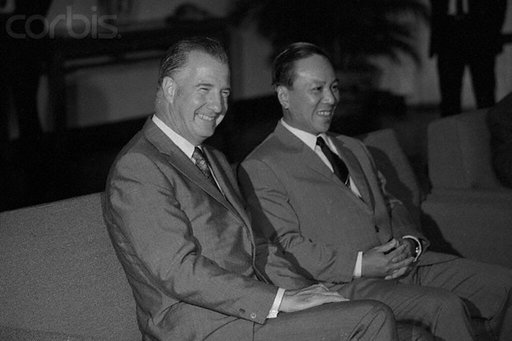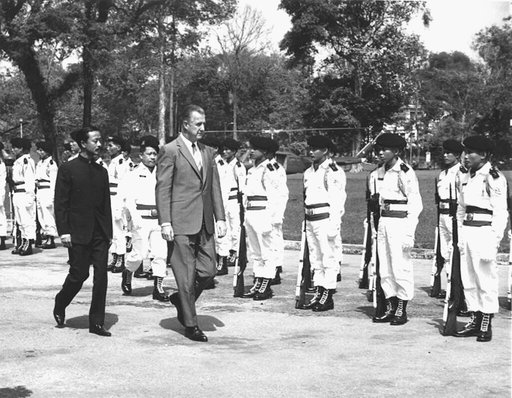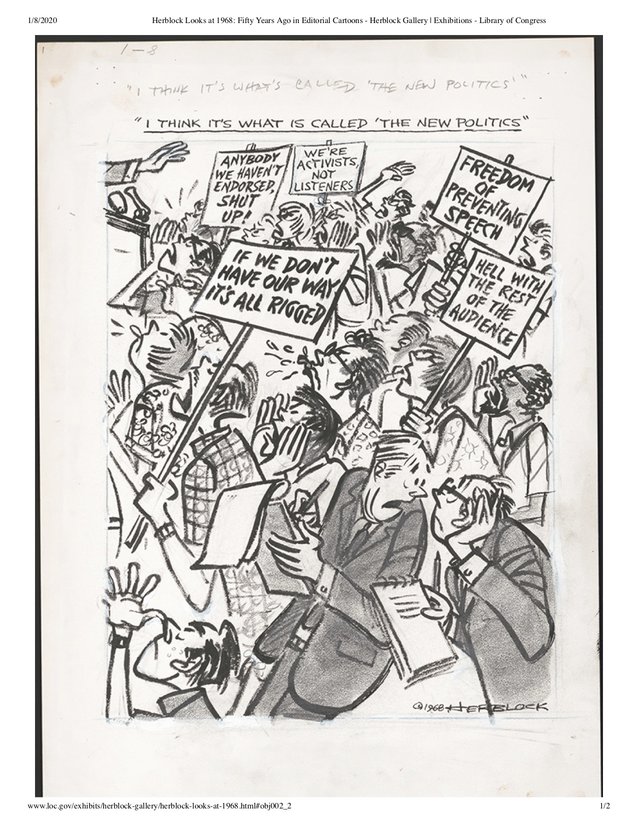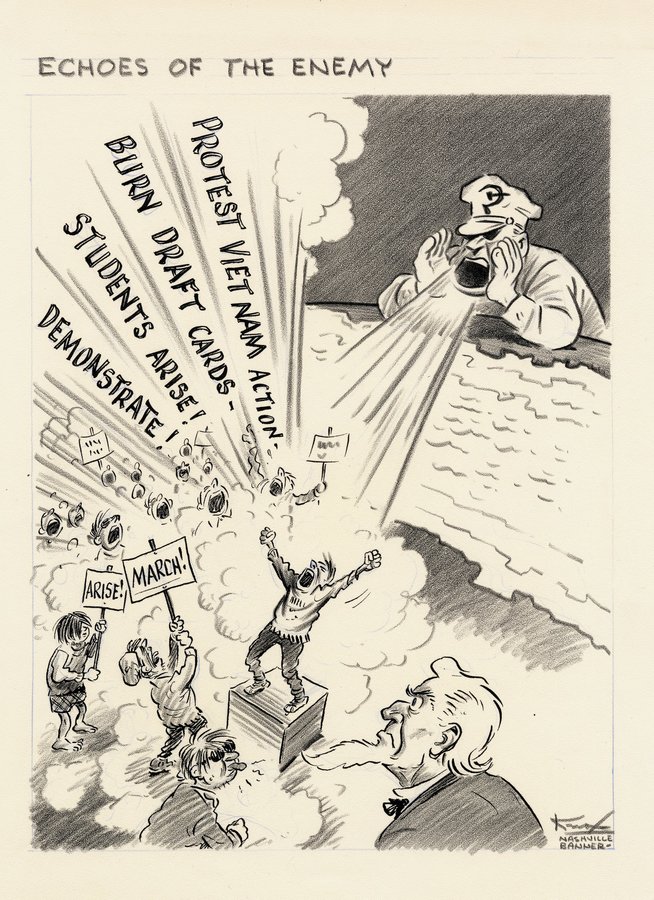The 1960s, the Vietnam War and Student Activism
Learning Objectives
- To examine primary source materials regarding cultural and political issues and conflicts during the mid- to late-1960s.
- To compare how different political and cultural authorities characterized young people and anti-war protestors from this period.
- To analyze tactics of symbolism and persuasion used in editorial cartoons and political speeches.
General Discussion Questions
- How did powerful members of the political and cultural establishments, such as Spiro Agnew, characterize young activists during the Vietnam War?
- Why do these speeches and cartoons attempt to dehumanize certain groups of Americans?
- How do these speeches and cartoons reflect Patricia Roberts-Miller's definitions of democratic and demagogic discourse?
Links
- Spiro Agnew, "Agnew's campaign speech, Saginaw, Michigan," September 16, 1970
- Jack Knox Collection, "Echoes of the Enemy," Published in Nashville Banner in 19xx, Billy Ireland Cartoon Library and Museum, The Ohio State University
- Herbert Block, "I Think It's What Is Called 'The New Politics,'" 1968. Published in the Washington Post on August 1, 1968, Herbert L. Block Collection, Library of Congress
Campaign Speech by Vice President Spiro Agnew, 1970
Recording of Agnew's campaign speech, Saginaw, Michigan, September 16, 1970
Background Information
- Spiro T. Agnew, a Republican from Maryland, was the Vice President for Richard Nixon from 1969-1973. He later resigned from his position after pleading no contest to a felony charge of tax evasion.
- As Vice President to Nixon, Agnew gained notoriety for speaking out against demonstrators protesting against American intervention in the Vietnam War. He often condoned protestors as violent and confrontational.
- On September 16, 1970, Agnew visited Saginaw, Michigan to campaign for Lenore Romney, a Republican running for Senate. Romney eventually lost the election to Democratic incumbent Philip A. Hart by a wide margin.
Analysis and Discussion Questions
- What is Agnew's stated purpose for making this speech?
- How does Agnew react to counter-protest chants occurring during his speech?
- Agnew speaks about "radical liberalism" through much of this speech. What traits and claims do Agnew use to characterize this group?
- Why do you think Agnew works to characterize this group in these ways?
- Do you think Agnew is practicing strategies of demagoguery as defined by Patricia Roberts-Miller? Why or why not?


"Echoes of the Enemy" Political Cartoon
Background Information
- Over the course of the Vietnam War from 1964 to 1975, an opposition movement to American involvement in Vietnam emerged and grew throughout the country. A large potion of the anti-war movement included students and young counterculture advocates.
- On December 1, 1969, the Selective Service System initiated a draft lottery, requiring men between the ages of 19-25 to enroll for military duty. Many young people attempted to evade the draft using methods such as burning their draft cards.
- Jack Knox was a conservative editorial cartoonist for the Nashville Banner between 1946 and 1975.
Analysis and Discussion Questions
- Who do you think is the man standing behind the wall? What evidence can you cite to support your idea?
- Why do you think this man is screaming towards the demonstrators? Why do you think Knox includes this man in the cartoon?
- Describe the expression of the man at the bottom of the cartoon. Why do you think he looks like this?
- Based on your interpretations, how does the cartoonist depict the demonstrators? Reference at least two specific elements to support your response.
- How do the cartoonist's depictions of the demonstrators compare and contrast with Agnew's characterizations of the protestors in Source #1?
"I Think It's What Is Called 'The New Politics'" Political Cartoon, 1968

"I THINK IT’S WHAT’S CALLED ‘THE NEW POLITICS’", Published in the Washington Post, August 1, 1968, www.loc.gov/exhibits/herblock-gallery/herblock-looks-at-1968.html#obj002_2
Explore more at "Herblock Looks at 1968: Fifty Years Ago in Editorial Cartoons, Part II"
Background Information
- Over the course of the Vietnam War from 1964 to 1975, an opposition movement to American involvement in Vietnam emerged and grew throughout the country. A large potion of the anti-war movement included students and young counterculture advocates.
- In addition to the anti-war movement, several other notable social movements emerged during the late 1960s, including civil rights movements for African-Americans, women, gay people, and people with disabilities.
- Herbert L. Block, commonly known as "Herblock," was a popular editorial cartoonist during the 1960s. He frequently created cartoons that commented on domestic and foreign policy issues.
Analysis and Discussion Questions
- Describe the characterizations of the protestors. What are they doing?
- What is the significance of the signs held by the protestors? What do you think they are meant to demonstrate?
- How do the characterizations of protestors in this cartoon compare to those found in the "Echoes of the Enemies" cartoon (Source #2)?
- Why do you think this cartoon is titled "I Think It's What Is Called 'The New Politics?'" What do you think "The New Politics" means?

